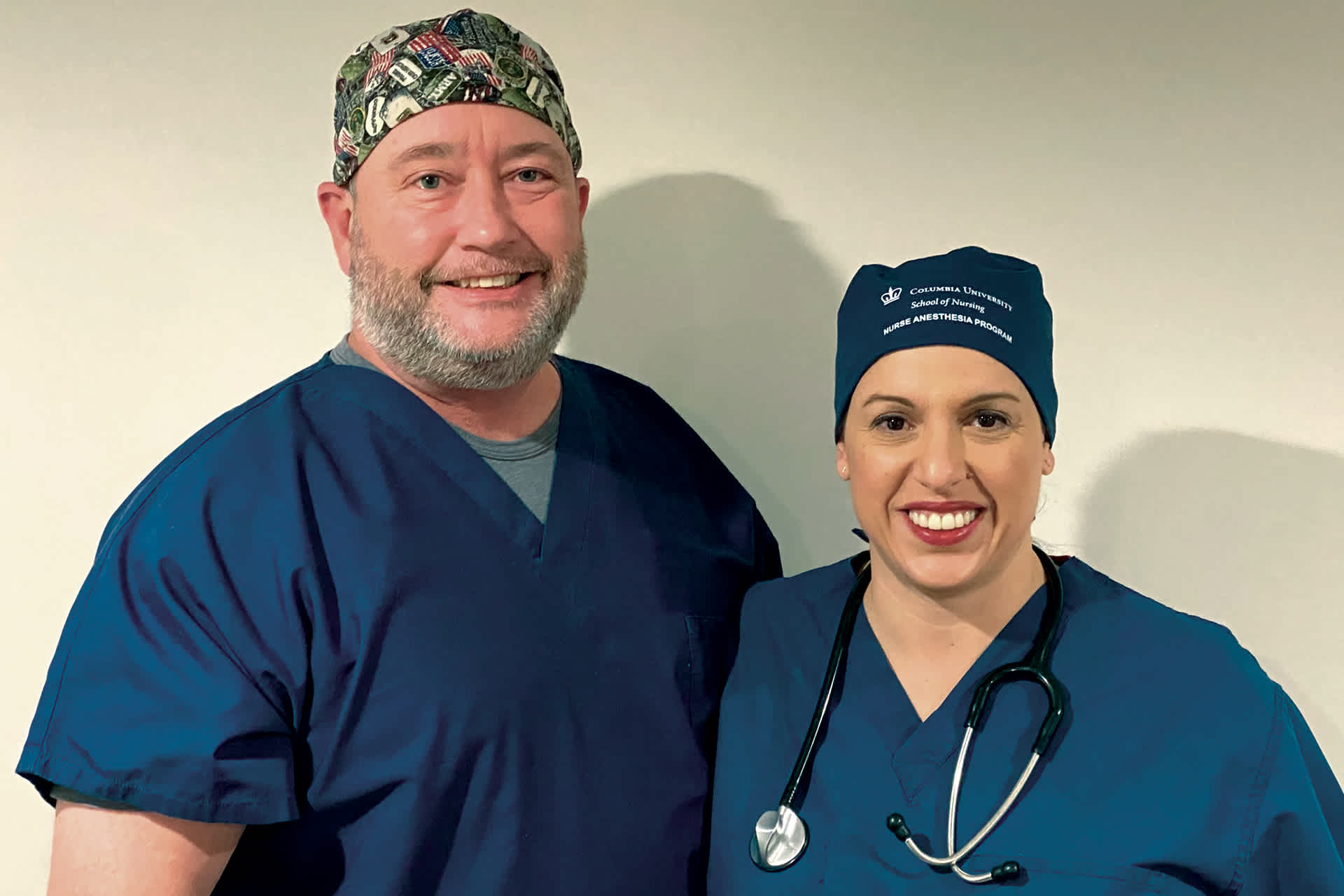Sleeping on the Job

Imagine this: Your tonsils are so inflamed that it’s hard to swallow. Every gulp is painful. The doctor has a solution: a tonsillectomy. It’s a surgical procedure in which a medical professional will remove the infected oval-shaped lymph nodes from the back of your mouth.
“Will the operation hurt?” you ask. “Not a chance,” the doctor says. That’s because a Certified Registered Nurse Anesthetist, or CRNA, will be a part of the surgical team. It’s that person’s job to help administer the anesthesia that makes patients much less sensitive to pain during surgery.
Brett Hayes is a CRNA. “If you want an exciting career with direct, hands-on caring for people and saving lives, you won’t regret picking anesthesia as a career,” he says.
All in a Day’s Work
Throughout history, there have been countless medical breakthroughs and discoveries. Perhaps none has been more consequential than the use of anesthesia to deaden the pain of surgery.
Some forms put people into a sleeplike state for a short time during routine medical procedures. General anesthesia causes patients to lose consciousness during major operations, such as hip replacements or open-heart surgeries. A regional anesthesia numbs only a part of a patient’s body, although the person might be awake. Local anesthesia numbs a small area, such as around stitches.
CRNAs help the anesthesiologist administer these drugs. To that end, CRNAs must deal with different types of patients. “I can see anywhere from one to 15 patients per day, depending on the timing and difficulty of the procedure,” Hayes says. For example, he might start the day taking care of a 5-year-old who needs her tonsils removed. He may later move on to a 20-year-old who needs his appendix out, or to an elderly woman who needs to have her knee replaced.
“I might finish the day in the obstetrical department, giving anesthesia to an expectant mother about to deliver a baby,” he says. “Rarely are two days the same.”
The CRNAs’ work begins long before surgery. First, they research the patient’s medical history to find the right kind of anesthesia. That means going over test results and surgical histories, plus determining if the patient has any allergies. During surgery, the CRNA assists the anesthesiologist in maintaining a level of anesthetic to ensure the patient doesn’t wake up or respond to pain during the surgery.
Still, being a nurse anesthetist is much more than knowing which drugs to use or how to monitor them. “In order to be truly successful, you have to connect with people,” says Antoinette Padula, Hayes’s wife. Also a CRNA, she teaches at Columbia University, in New York City. “It means giving support and encouragement to patients and their loved ones during some of the most critical, often life-changing moments in their lives.”
The Road to Becoming a CRNA
It takes a lot of work to be a CRNA. Hayes and Padula say it’s a good idea to enroll in advanced science and mathematics classes in high school. New requirements require all CRNAs to obtain a doctorate degree. A CRNA must then pass an exam to become certified.
For his part, Hayes began his journey as a critical-care nurse in the U.S. Army Reserve. “A few of my army buddies were CRNAs and convinced me that I needed to pursue that profession,” he says. “It was the best decision I ever made. I can’t count the number of lives I have directly or indirectly saved.”
Hayes saved some of those lives after he was deployed during the war in Afghanistan. He served as part of a forward surgical team whose mission was to help wounded soldiers and civilians. “If you choose the path to becoming a nurse anesthetist, know that it is long and difficult,” he says. “It is, however, worth every minute you’ll put into it.”

